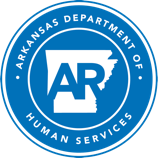Overview
When the Office of Long Term Care inspects or surveys nursing homes, any failures of the facility to meet regulatory requirements are noted on a form known as a 2567. This form specifies the regulation that was violated with a tag (for example, F224). It also notes the scope and severity of the violation.
Each nursing home is required to post its most recent 2567 in an area where residents and their families and visitors can see it easily. Be sure to check the 2567 of your loved one’s facility; and if it notes violations, follow up with the nursing home administrator to find out how and when the shortcomings will be corrected.
The following table explains some of the information included on the 2567. Terms in blue are links; click the link to see a definition of that term. Or scroll to the bottom of this page to see the list of definitions.
| Severity | Scope | Level | Recorded on 2567 | POC required | Potential penalties |
|---|---|---|---|---|---|
| Immediate jeopardy | Widespread | L | Yes | Yes | Directed plan of correction State monitor Directed in-service training Denial of payment for new admissions (DPNA) Denial of payment for all admissions (DNA) Temporary management Termination from the Medicaid program Additional remedies imposed by State as it deems appropriate One-time civil money penalty of $3,050 to $10,000 per day or $1,000 to $10,00 per instance |
| Immediate jeopardy | Pattern | K | Yes | Yes | |
| Immediate jeopardy | Isolated | J | Yes | Yes | |
| Actual harm that is not immediate jeopardy | Widespread | I | Yes | Yes | |
| Actual harm that is not immediate jeopardy | Pattern | H | Yes | Yes | Directed plan of correction State monitor Directed in-service training Denial of payment for new admissions (DPNA) Denial of payment for all admissions (DNA) Additional remedies imposed by State as it deems appropriate One-time civil money penalty of $3,050 to $10,000 per day or $1,000 to $10,00 per instance |
| Actual harm that is not immediate jeopardy | Isolated | G | Yes | Yes | |
| No actual harm with potential for more than minimal harm | Widespread | F | Yes | Yes | |
| No actual harm with potential for more than minimal harm | Pattern | E | Yes | Yes | |
| No actual harm with potential for more than minimal harm | Isolated | D | Yes | Yes | |
| No actual harm | Widespread | C | Yes | Yes | No penalty imposed unless the facility does not submit a Plan of Correction that is acceptable to OLTC. |
| No actual harm | Pattern | B | Yes | Yes | |
| No actual harm | Isolated | A | No | No | Facility must assure OLTC that it will correct the deficiency. |
| Note: Shaded red levels may be classified as substandard quality of care. | |||||
Definitions
Severity. How serious the harm was to residents. Severity has four categories, listed below in order from most serious to least serious.
Immediate jeopardy. The deficiency has resulted in noncompliance, and immediate action is necessary. An event has caused or is likely to cause serious injury, harm, impairment, or death to resident(s).
Actual harm that is not immediate jeopardy. The deficiency has resulted in noncompliance with regulatory requirements and a negative outcome, compromising the resident’s ability to reach the highest practicable level of functioning.
No actual harm with potential for more than minimal harm that is not immediate jeopardy. The deficiency has resulted in noncompliance with regulatory requirements and has caused resident(s) minimal discomfort or has the potential to compromise the ability of the resident to reach his or her highest practicable level of functioning.
No actual harm with potential for minimal harm. The deficiency has the potential for causing no more than minimal harm and will have only a minor negative impact on residents.
Scope. How many residents were or could have been affected by the violation. Scope has three categories, listed below in order from most serious to least serious.
Widespread. Problems causing the deficiency are pervasive throughout the facility and have affected or have the potential to affect all or a large portion of the facility’s residents. The facility lacks an adequate system or policies to prevent the deficiency from recurring.
Pattern. More than a limited number of residents were affected, or more than a limited number of staff were involved, or the situation occurred in several locations, or the same resident or residents were affected by repeated occurrences of the same deficient practice.
Isolated. Only one or a very limited number of residents were affected, or a very limited number of staff were involved, or the situation has occurred only occasionally or in a very limited number of locations.
Plan of Correction (POC). A statement made by the facility and recorded on the 2567 outlining how the facility will correct a deficiency, the time frame in which it will be corrected, and the method of determining that the correction is being implemented and followed over time.
Substandard quality of care. One of the following regulations was violated:
- 42 C.F.R. § 483.13 – Resident behavior and facility practices
- 42 C.F.R. § 483.15 – Quality of life
- 42 C.F.R. § 483.25 – Quality of care



